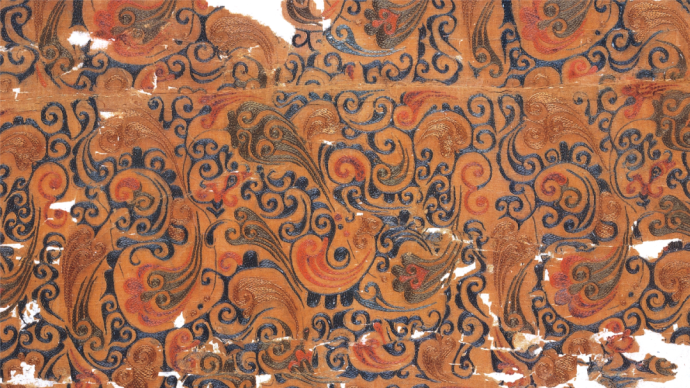
Mawangdui Han Tomb is located in Mawangdui Street, Furong District, Changsha City, Hunan Province. From 1972 to 1974, three archaeological excavations were carried out successively, and more than 3,000 precious cultural relics were unearthed, including more than 700 pieces of exquisite lacquerware with complicated craftsmanship and more than 500 pieces of silk clothing with exquisite embroidery. found one. The discovery of the Mawangdui Han Tomb provided important data for the study of the burial system, the development of handicrafts and technology in the early Han Dynasty, and the history, culture and social life of Changsha.

Yu Yanjiao (right) is instructing staff to clear and archive the cultural relics unearthed from the Mawangdui Han Tomb. Source: Hunan Provincial Museum
According to Xinhua News Agency, the Hunan Provincial Museum completed a systematic inventory of the cultural relics unearthed from the Mawangdui Han Tomb on the 21st, and ordered all the cultural relics that were not recorded in the warehouse. Among them, there are more than 19,000 items in the textile library and more than 1,700 items in the lacquer woodware library.Dong Yanyan, an associate research librarian at the Hunan Provincial Museum, who has long been engaged in the protection, restoration and research of ancient textile cultural relics, said that due to the large number of silk fabrics unearthed earlier, the broken pieces and the "silk bricks" formed by the adhesion of a large number of textiles are still uncertain. It is only recorded as a data cultural relic. In this clearing, experts have archived the fragments with information, certain characteristics and significance.
"The purpose of clearing the treasury is to better protect and preserve cultural relics." Yu Yanjiao, director of the Mawangdui Han Tomb and Collection Research and Exhibition Center of the Hunan Provincial Museum, said that text was found in the Lingwenqi fragments during the clearing of the treasury. "This is the first time that the diamond pattern unearthed from the Mawangdui Han tomb has woven characters. It is a typical seal script and reflects the superb textile weaving skills in the early Han Dynasty." Yu Yanjiao said that the Chinese characters woven into the silk fabrics are In Zhuan Li, a Chinese character has been discovered: this character has a cursive character above and a "wu" character below.
In addition, experts discovered new patterns of silk fabrics in the Qing treasury, which enriched the cognition of tomb cultural relics. Yu Yanjiao said that, for example, in longevity embroidery, it was originally believed that only dragon patterns were found, but this time, phoenix patterns were discovered. The Mawangdui phoenix pattern is the standard image of the phoenix in the early Han Dynasty. It inherits the Chu style phoenix style, which means beauty, auspiciousness, and longevity.
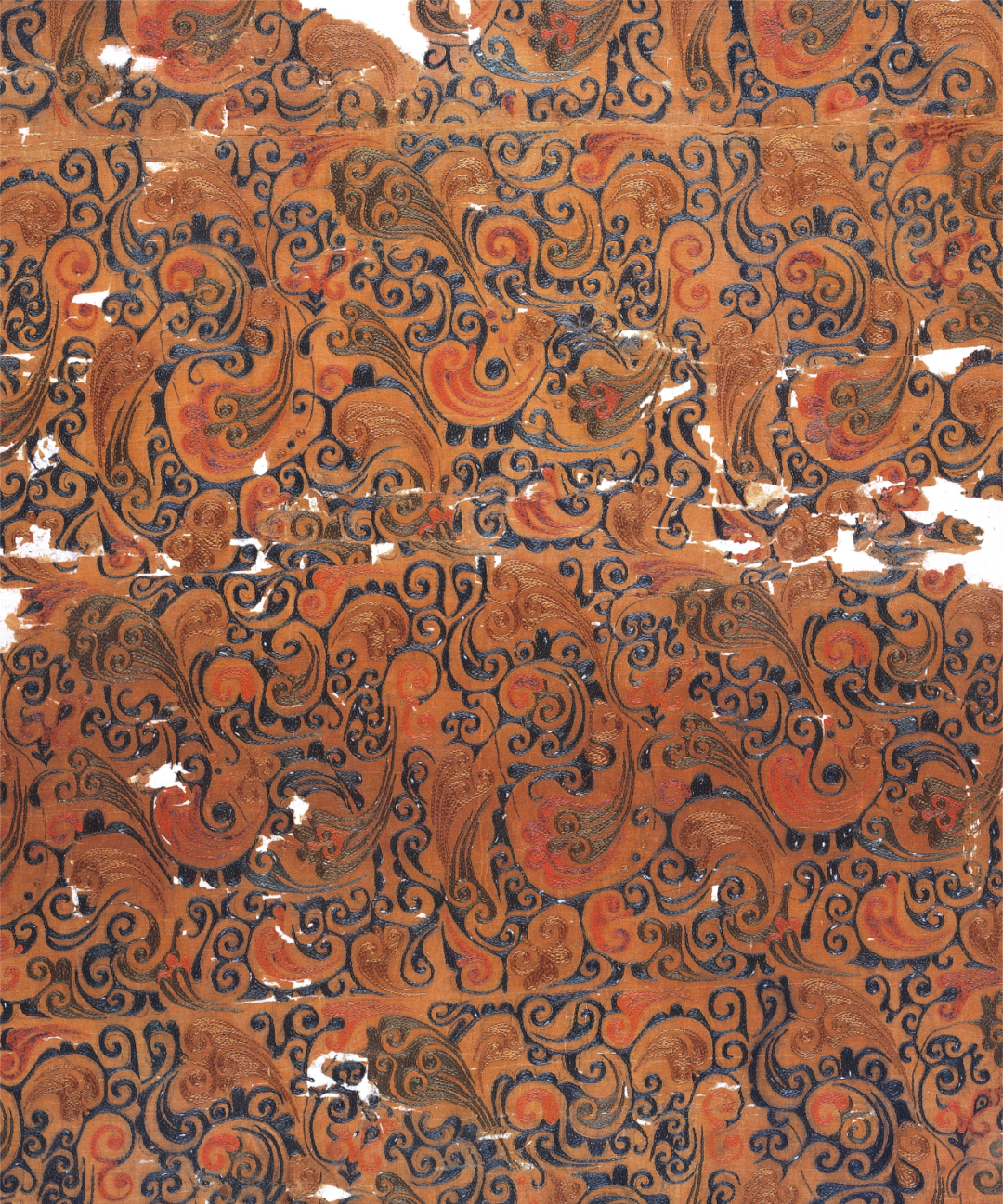
This is the "longevity embroidery" on silk unearthed from the Mawangdui Han Tomb. Source: Hunan Provincial Museum
Experts from the Hunan Provincial Museum are still in the process of clearing the warehouse, and they have conducted further research on the only "feather appliqué silk" unearthed in China that uses feathers as coffin decorations. "It is recorded in ancient documents that paintings are used as coffin decorations, but the use of feathers as coffin decorations is the only one found so far." Dong Yanyan said that there may be 3 to 4 kinds of feathers in terms of shape analysis, but due to the relatively high carbonization It is so powerful that it is difficult to determine which animal the feather belongs to.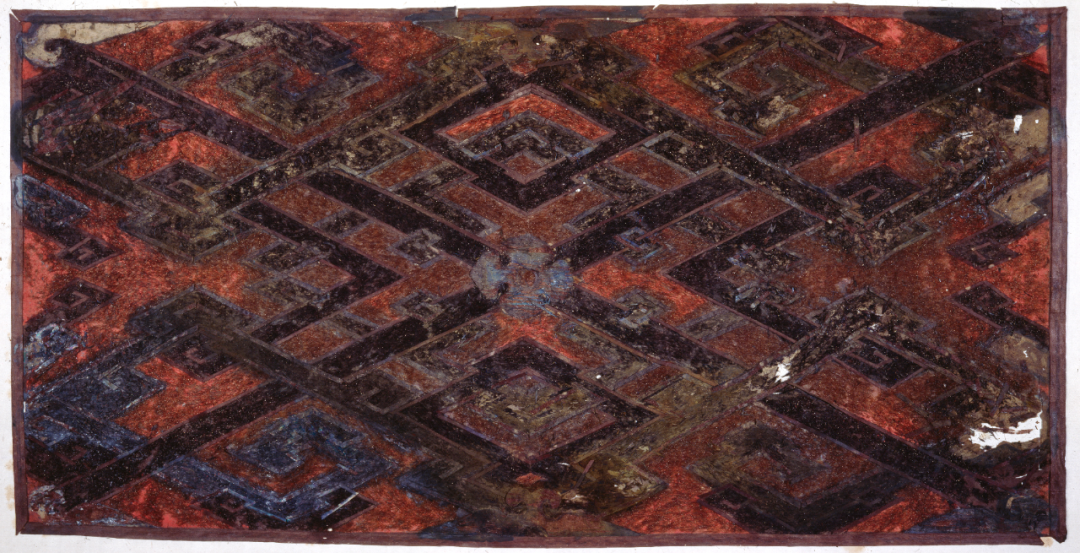
Feather appliqué silk unearthed from the Mawangdui Han Tomb Photo courtesy of Hunan Provincial Museum
In addition, in this systematic clearing of the treasury, dozens of fragments of silk books with handwriting were also found. At present, it can be determined that some of them are from the third chapter of the silk book "Xingde", which provides new information for related research.
This is part of the first chapter of the silk book "Xingde" unearthed from the Mawangdui Han Tomb. Source: Hunan Provincial Museum
The silk book Xing De has three chapters A, B and C, all of which were unearthed in 1973 at Mawangdui Tomb No. 3 in Changsha City, Hunan Province. The first chapter is an important chapter of the theory of punishment and morality in the early Han Dynasty, and the second chapter is mainly about the explanation of the law of punishment and morality and the interpretation of the "Nine Palaces of punishment and morality", as well as the astronomical and meteorological measurement of cloud, wind, rain, thunder and so on. The stipulations of the good and bad of the war, the third chapter is too broken, it is difficult to put together and read the sentence.Yu Yanjiao said that the first chapter of the silk book "Xingde" was copied in ancient script, which is well preserved, the characters are generally readable, and the nine palaces and the table of stems and branches are clearly identifiable. Value; the second chapter was copied in official script, and the date of copying should be around the first year of Xiaohui (194 BC), which provided an important reference for determining the copying time of the similar script manuscripts in the silk book; while the third chapter was copied in a 48 cm wide and 82 cm long on silk.
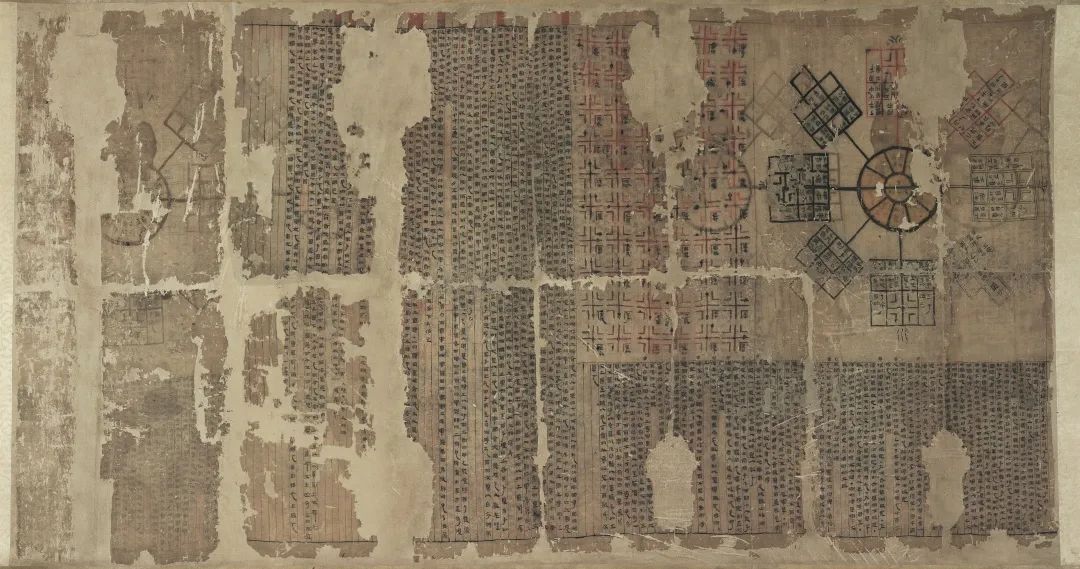
Part B of the Silk Book "Xingde" Unearthed from the Han Tomb in Mawangdui Hunan Provincial Museum
Some of the fragments found this time can be determined to be from the third chapter of the silk book "Xingde". "A total of 18 fragments of the existing original part of Chapter C of "Xing De" were uncovered and mounted, all of which were copied in Zhu Wen. The columns of this chapter are all black Wusi columns with a thick ink line border. Is this more peculiar form? It has no meaning and needs to be studied." Yu Yanjiao said.Experts pointed out that some silk books in Mawangdui have Zhusi columns or Wusi columns. Some scholars once believed that they were woven. This time, based on the comparison of the fragments, it was determined that they were painted.
More than 50 silk books have been unearthed from the Mawangdui Han Tomb. "All silk books are handwritten, and each person's handwriting is different, so each article has its own characteristics. Therefore, the characteristics of handwritten fonts can provide a basis for identifying which silk book the characters on the fragments belong to." Yu Yanjiao said .
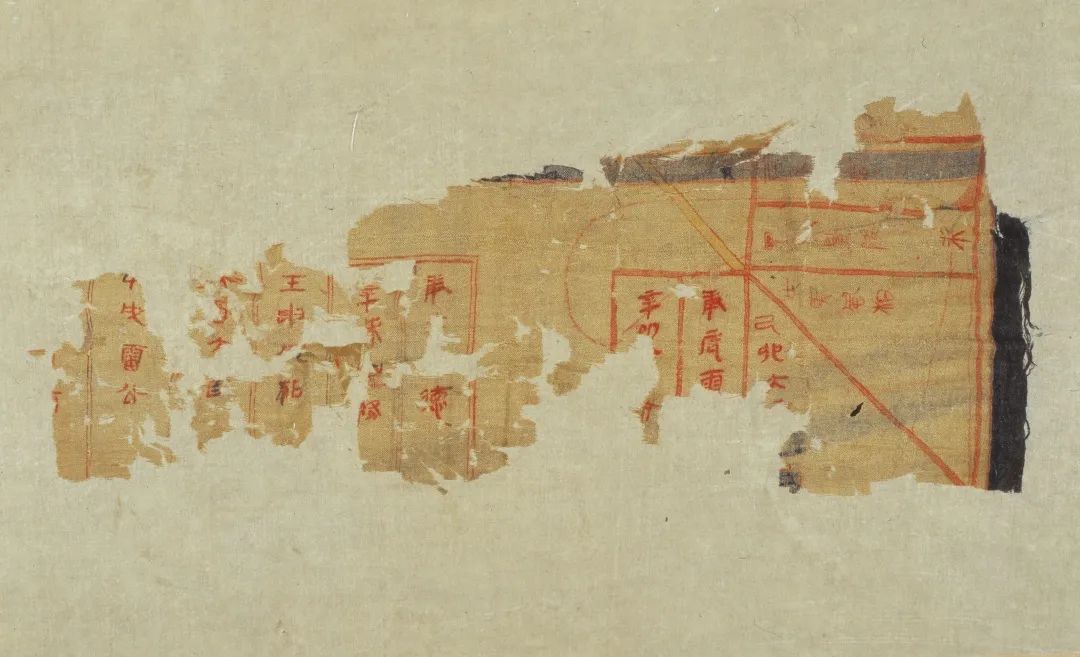
Part C of the silk book "Xingde" unearthed from the Han Tomb in Mawangdui Photo courtesy of Hunan Provincial Museum
In fact, handwriting recognition requires years of research and accumulated experience, so the "replacement" of silk fragments can only rely on manual search and comparison. In addition, since the layers of the silk book are adhered to each other, the ink will produce positive and negative printing and layer-by-layer bleeding.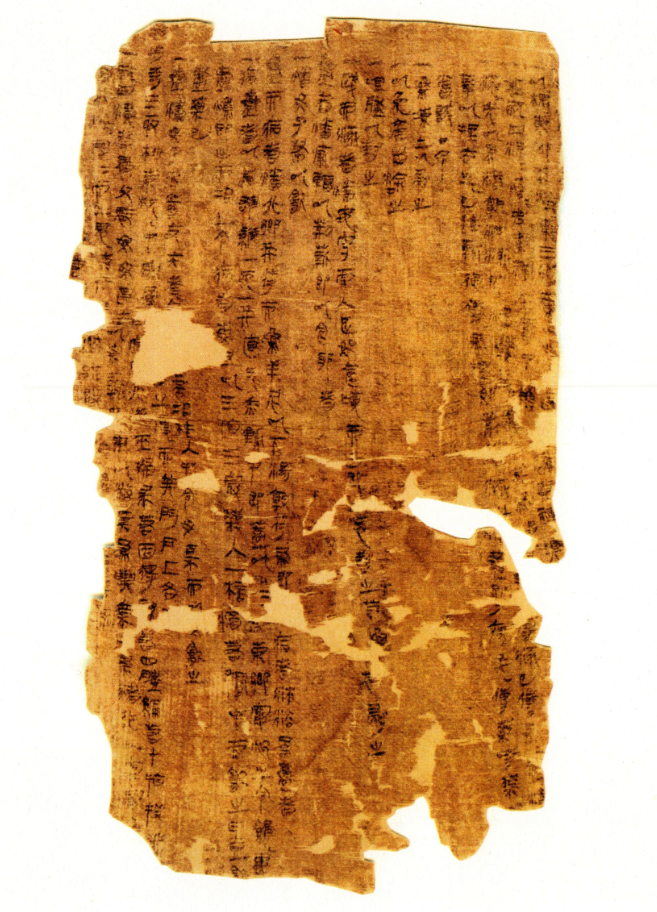
"Fifty-two Prescriptions for Diseases" Silk Book Data Map in the Collection of Hunan Provincial Museum
"When the silk book was first unearthed, it was complete, but it became a 'silk brick'. Due to the technical limitations of the time, in order to open the silk book page by page, the most primitive method of steam fumigation had to be used to dampen it, and then open it again. In this process, many fragments were produced." Chen Rui, deputy director of the Mawangdui Han Tomb and Collection Research and Exhibition Center of the Hunan Provincial Museum, said that in order to "return" the silk fragments, it is necessary to find out which silk books they belong to. How did it stack up at that time, so that it was possible to distinguish between the infiltrated print and the reverse print, and then to determine which layer the fragments belonged to, this work was quite difficult.The Hunan Provincial Museum has carried out cooperative research on the newly sorted fragments of silk books with characters and the Research Center for Unearthed Documents and Ancient Writings of Fudan University.
The Mawangdui Han Tomb excavated from 1972 to 1974 is the tomb of the Prime Minister of Changsha State in the Western Han Dynasty and the family of Li Cang, the Marquis of Li. More than 3,000 precious cultural relics have been unearthed, including more than 700 pieces of exquisite lacquerware with complex craftsmanship and more than 500 pieces of exquisite embroidery. Silk clothing, etc., is one of the major archaeological discoveries in the world in the 20th century. Among them, more than 100,000 characters and more than 50 articles covering a wide range of bamboo and silk documents have been unearthed, inheriting the knowledge and wisdom of the sages. Wet corpse.

Mawangdui Han Tomb archaeological excavation site
(This article is synthesized from Xinhua News Agency, Wenbo Shanxi)